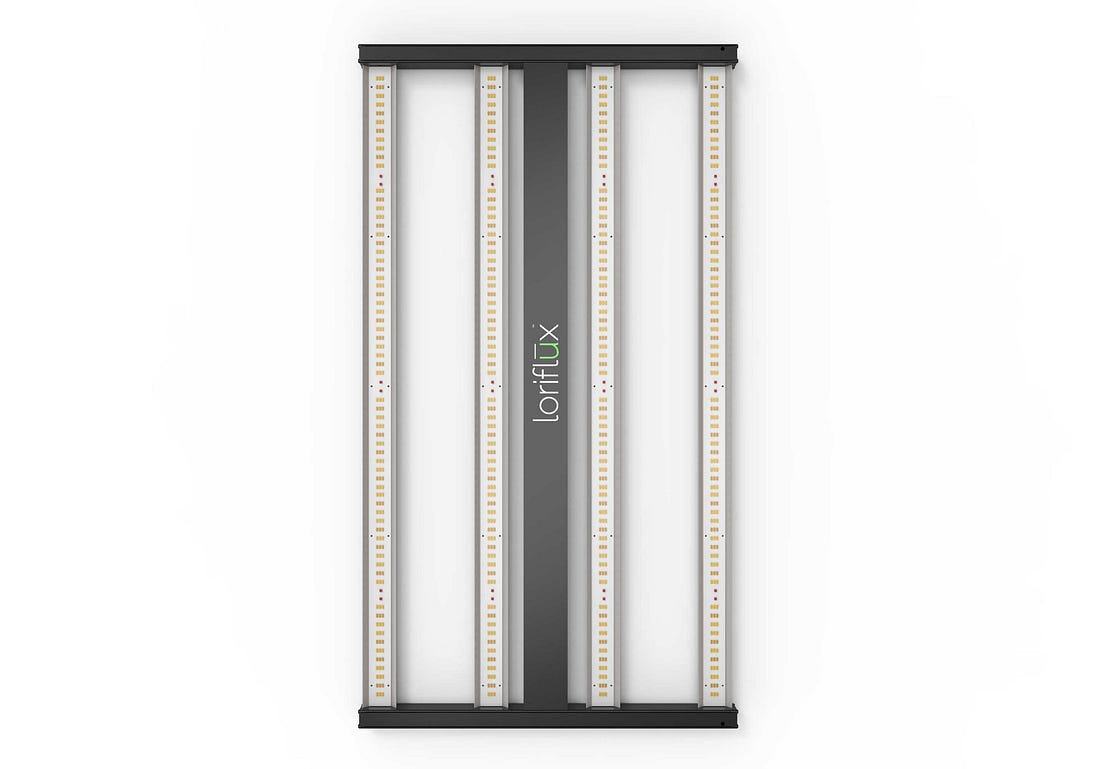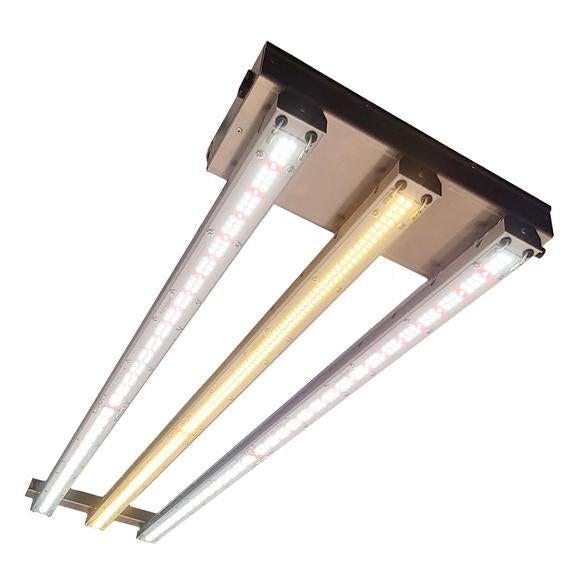- Home
- SHOP ECO FARM
-
TOP BRANDS
-
Grow Lights Brands
- Adjust-A-Wing
- Apollo Horticulture
- Bestva
- Black Dog LED
- California Lightworks
- ChilLED Grow Light
- Eco Farm
- HLG - Horticulture Lighting Group
- Kingled
- Kind LED
- Mars Hydro
- Morsen
- Neilo
- NextLight
- Phlizon
- PlatinumLed
- Roleadro
- Optic LED Grow Lights
- ViparSpectra
- Vivosun
- EYE Hortilux
- IPOWER
- NanoLux
- Phantom grow light
- Gavita grow lights
- Grower's Choice
- Lumatek
- Maxibright
- Yearld Pro
- ThinkGrow
- Crecer Lighting
- Green Sunshine Electric Sky
- fohse aries
- loriflux
- luxx
- fluence
- iluminar
- Lex
- LTC
- Rayonled
- FGI
- PHOTONTEK
- Grow Tents & Kits Brands
- Extraction & Harvest Brands
- Climate Control & Hydroponic Brands
-
Grow Lights Brands
- COMPANY INFO
- COOPERATE WITH US
- Blog
- Sign in
- Home
-
SHOP ECO FARM
- ECO Farm Grow Lights
- ECO Farm LED Grow Lights
- ECO Farm Quantum Board
- ECO Farm Samsung LED Grow Lights
- ECO Farm COB Grow Lights
- ECO Farm Commercial Lights
- ECO Farm Supplemental Grow Light
- ECO Farm Fluorescent grow lights
- ECO Farm HPS & MH Grow Lights
- ECO Farm CMH Grow Lights
- ECO Farm HID/CMH Bulbs & Ballasts
- ECO Farm Grow Tents & Kits
- ECO Farm 2x2ft Grow Kits
- ECO Farm 3x3ft Grow Kits
- ECO Farm 3.3x3.3ft Grow Kits
- ECO Farm 4x4ft Grow Kits
- ECO Farm 5x5ft Grow Kits
- ECO Farm Grow Tent - Standard Style
- ECO Farm Grow Tent - Extension & Roof & Lodge Style
- ECO Farm Extraction & Harvest
- ECO Farm Rosin Press Machine
- ECO Farm Dry & Wet Trimmers
- ECO Farm Oil Accessories
- ECO Farm Medicinal Plants Grinder
- ECO Farm Medicinal Plants Containers
- ECO Farm Medicinal Plants Dryer
- ECO Farm Refrigeration Dryer
- ECO Farm Climate Control & Other Accessories
- ECO Farm Inline Duct Fans
- ECO Farm Oscillating Fans
- ECO Farm Exhaust Fans
- ECO Farm Air Filter
- ECO Farm Duct Muffler
- ECO Farm Ventilation Kits
- ECO Farm Plant Humidifiers
- ECO Farm Plant Dehumidifiers
- ECO Farm Hydroponic Accessories
- ECO Farm Other Accessories
- ECO Farm Hydroponics Microscopes
-
TOP BRANDS
- Grow Lights Brands
- Adjust-A-Wing
- Apollo Horticulture
- Bestva
- Black Dog LED
- California Lightworks
- ChilLED Grow Light
- Eco Farm
- HLG - Horticulture Lighting Group
- Kingled
- Kind LED
- Mars Hydro
- Morsen
- Neilo
- NextLight
- Phlizon
- PlatinumLed
- Roleadro
- Optic LED Grow Lights
- ViparSpectra
- Vivosun
- EYE Hortilux
- IPOWER
- NanoLux
- Phantom grow light
- Gavita grow lights
- Grower's Choice
- Lumatek
- Maxibright
- Yearld Pro
- ThinkGrow
- Crecer Lighting
- Green Sunshine Electric Sky
- fohse aries
- loriflux
- luxx
- fluence
- iluminar
- Lex
- LTC
- Rayonled
- FGI
- PHOTONTEK
- Grow Tents & Kits Brands
- Apollo Horticulture
- Black Box
- CoolGrows
- Eco Farm
- GrowLab
- Gorilla Grow Tents
- Mars Hydro
- Quictent
- Secret Jardin
- Unit Farm
- TopoGrow
- VIVOSUN
- Topolite
-
COMPANY INFO
-
COOPERATE WITH US
- Blog
Loriflux 4blade 180W LED Grow Light VS Grow-It-LED Excalibur King Series 200W Veg LED Grow Light
January 06, 2022
Grow lights are an excellent way to supplement natural light. Grow lights are also useful for hobbyist growers who want to effectively grow potted plants indoors without access to natural light year-round. Indoor gardeners can place the grow light closer, allowing them to increase yields from smaller spaces.
LED grow lights are a great option for any indoor grower enthusiast. They use less energy than other methods, which means they will save you money on your electric bill and help the environment too!
Most indoor growing environments are limited by square footage. Smaller grow tents or rooms can struggle to produce abundant yields without the use of LED Grow Light technology because they have a more focused beam that covers less space than traditional lighting systems. Because these lamps focus their light in one direction, they allow growers to use them in tight spaces with high ceilings to produce the same yields they would in a larger space.
This article will highlight how to choose the right LED lights, and other tips to maximize your grow tent yields.
Loriflux 4blade 180W LED Grow Light

Features:
Loriflux grow light is the perfect solution for early planting, whether it is cloning, cultivation, nutrition, or even tent planting and flowering. The 4 blade contains the same technology, functions and advantages as our flagship products (including Samsung and Osram diodes), built-in dimming and linking functions, and a 5-year warranty. A 180 W full-spectrum device with variable power levels will enable you to effectively clone, cultivate plant tissues, early vegetables and even flowers in stealth or smaller tents and shelves.
Grow-It-LED Excalibur King Series 200W Veg LED Grow Light

Features:
The Excalibur King 200W LED Grow Light is a powerful, commercial grade LED grow light that is designed to outperform the competition at an affordable price. The Excalibur King comes in the spectrum packages you need to offer both tiered pricing and spectrum options. This grow light features a passively cooled design that provides completely silent operation. Each LED is under-driven for increased efficiency and longevity so you can expect 100,000 hours of life from this system. Each spectrum is itself an excellent option, depending on your specific needs. Even the lowest priced option can easily replace a 300w MH grow light and still produce a product that is far better than anything you’ll get from an HPS fixture.
Things to Consider When Buying LED Grow Lights
Power Supply
If you are considering growing plants that do not require much intensity or a high degree of absorption, you should choose from the products that do not draw much power or need more current to function. If you are interested in vegetation that only grows when it absorbs a greater amount of light, it is better to select from the LEDs that suit the need.
Durability
When looking at the specifications of a LED grow light, it is necessary to check the materials used in its construction. The elements should resist damage from stress and moisture, and there should be a protective layer on the body. Furthermore, all the electric components inside the body should have adequate insulation where necessary.
Cooling System
Most of the products overheat if customers use them for more than 14 hours a day. If the product you bring produces more heat than the limit, it will not only possibly burn your plants, but also has a negative impact on the unit itself. Check if there is a sufficient built-in system for the heat sink. Generally, high-quality aluminium with ventilation holes or a sufficient number of fans is long-lasting.
Compare the PAR Values
Checking the Photosynthetically Active Radiation (PAR) of a product is also among the crucial aspects to remember. These radiations are beneficial to plants and act as an alternative to natural light. High PAR means more brightness level, which most of the plants love.
However, you must note that this quality does not necessarily mean that the light source is suitable. There should be an even distribution of this light so that no plant faces the inhibition in development phases. In this case, only those in the vicinity of LEDs will receive light and grow well, while the others will take a longer time or might die.
Programmability
The option to program certain features is something that proves to be extremely beneficial to the plant owners. They make your task more convenient by allowing you to adjust schedules and the specific wavelengths that your plants require. Just set the alarm for turning on and off the source, and ease the pressure of doing it yourself every day.
Price
It is better to note those options in the list that involve moderate to high costs. Why? Usually, LEDs are more expensive than other items such as fluorescent lights and there are fewer chances that they will be available at extremely reduced prices. It will also mean that they might not work for an extended period.
Thus, it might result in contacting the customer service or an electrician for the repair frequently, indicating more effort and bills. If you still want to buy a cheaper variant, make sure to check if it can last for a maximum of six to seven months and has a nice cooling system.
Tips To Maximize Your Grow Tent Yield
Consider Running A Hydroponics System
Using hydroponics systems to grow your plants can increase yield. One reason for this is that the plant roots will be directly fed nutrients, which help maximize their health and growth potential. The other benefit of running a hydroponics system with your light rigged inside a tent is increased control over environmental factors such as temperature and humidity.
Monitor Temperature And Humidity
Temperature and humidity levels within a grow tent are important factors to monitor. According to Indoor Garden City, temperatures should be between 70–80 degrees Fahrenheit during the day, with nighttime temps no lower than 60 degrees.
If humidity levels are too low, dry air will cause your plant’s leaves to turn yellow and wilt. When this happens, it is essential to raise the humidity level by adding a humidifier or increasing ventilation in order for your plants to thrive. Conversely, if there is excess moisture within the grow tent, you should increase ventilation or remove the humidifier to avoid fungus and mold.
Think About A Nutrient Plan
There are a lot of different nutrients you can use when growing plants indoors, but there’s no one perfect nutrient schedule. It all depends on your specific space and setup, the temperature, humidity level, how frequently it gets watered or misted. You have to think about these things before deciding which nutrients to use for your growth. Finding the right feeding mix for your plants can significantly improve your yields.
Conclusion
This has been a long journey since, in all honesty, choosing the best LED grow light for the plants in your grow tent wasn’t a piece of cake!
Although it wasn’t an easy task, we were up to the challenge of sorting out only the top 3 choices. Hopefully, you’ve found this article helpful so you can make the best decision for your beloved plants.
Also in Indoor Grow LED Grow Light
HLG Greenhouse Pro HE HV 630W LED Grow Light VS Geeklight grow light 480W hydroponic led grow light
October 20, 2023
